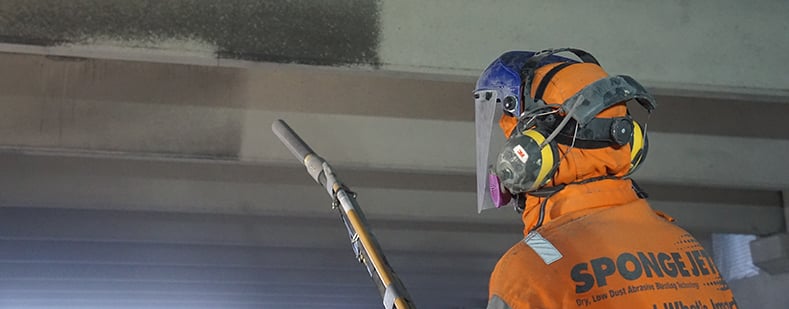When structural fires occur, they leave behind many hours of cleanup even if the fire doesn’t cause much structural damage. After fires, areas with affected masonry surfaces like concrete must be checked by a structural engineer to ensure entry is safe. Once the area is cleared, the restoration process can begin.
Typically concrete structures like parking garages and vehicular tunnels will only suffer surface damage from fires due to concrete’s natural heat resistance. While a fire can superheat concrete structures and impact the structural steel inside the concrete, more common issues are cracking (or spalling), soot, and smoke damage. Severity of these problems tend to be based on how long and how hot the fire burned. Severe fires can change the physical characteristics of the concrete, potentially rendering it unsalvageable.
If the fire damage is more cosmetic, rather than structural, the soot removal process is straightforward. Usually two approaches are used for removing soot; washing soot away with water and other chemicals, or exfoliating the surface with abrasive blasting to reveal the clean surface below. Water or chemical cleaning can be a lengthy process that requires multiple attempts to remove the soot. Further, the smell of the fire can penetrate deeper into the concrete than the surface and as a result, may remain after the visual damage has been removed. Care must be taken when using liquid based cleaning methods to collect the runoff so it does not flow into nearby storm drains or sewers.
When fires have caused the smooth surface concrete layers to crack and spall, contractors may be required to create surface roughness on the concrete prior to reapplying a skim coat. This surface roughness is held to a standard created by the International Concrete Repair Institute (or ICRI) known as CSP. The varying levels of roughness needed depends on the new layer of concrete or coating being applied.
Creating this roughness is not something that water or chemical cleaning can create. Abrasive blasting is the best option for creating this roughness, though sometimes hand tools are used. Sponge Blasting is uniquely suited for these types of applications as soot removal and surface roughening can be done in one step.

As the soot layers are removed from the concrete, the smell of the fire will come with it. On parking garages that have only sustained surface soot damage and no other cracking or spalling in the skim coat, blasting with Sponge Media can render these spaces the same - or in many cases cleaner than prior to the fire. Soot removal rates are typically very fast (more than 600 ft2 per hour / 55 m2 per hour) but depend on the severity of the damage.
Prior to quoting a Sponge Blasting project, it’s recommended to conduct a soot removal test prior to estimating and/or quoting a job. Contacting a Sponge-Jet representative for guidance here: https://www.spongejet.com/contact








